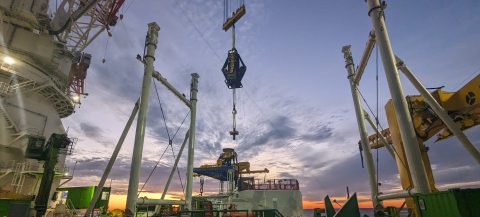
World's First
Seaqualize completes offshore transfer lifts for Vineyard Wind 1
Photo: Seaqualize
Seaqualize, a Dutch heave compensation specialist, has successfully executed the world’s first offshore transfer lifts of wind turbine components from a heaving supply vessel. The Heave Chief 1100, Seaqualize’s newly developed offshore lifting device, is being deployed by DEME Offshore US.
Want to read more?
You have read all of your free premium articles for this month. Please become a subscriber to keep reading.
Subscribe now!
Take advantage of our exclusive offer to get full access to all premium content.




